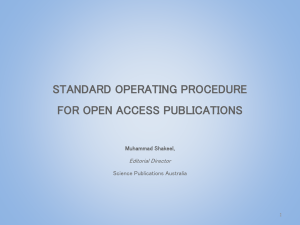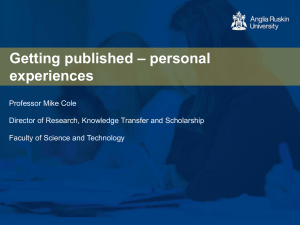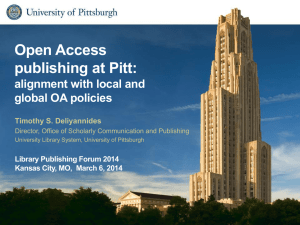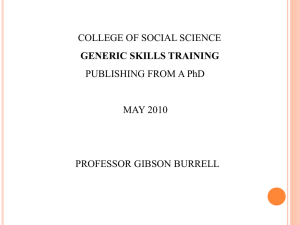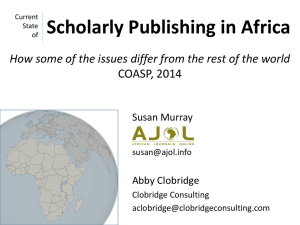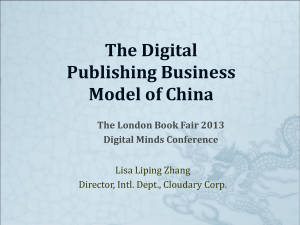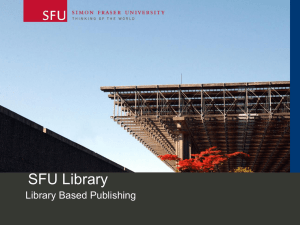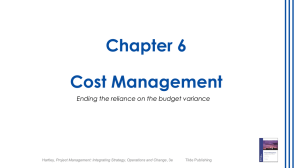Open access at the Royal Society
advertisement
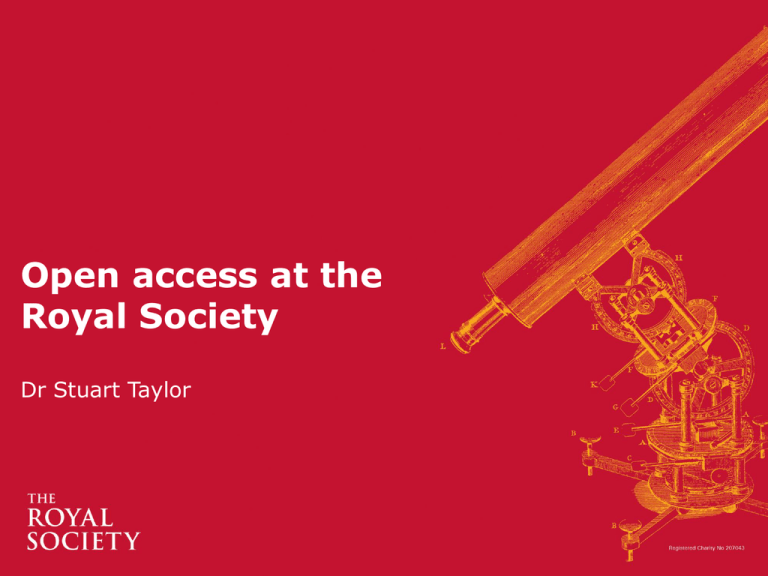
Open access at the Royal Society Dr Stuart Taylor Royal Society mission ..to recognise, promote, and support excellence in science and to encourage the development and use of science for the benefit of humanity. Royal Society journals Publishing science is something we have always done From 1665 to 2005 we had a purely subscription business (though not always a profitable one!) How RS Publishing is governed President Council Publishing Board Publishing Management Team Royal Society finances Total income publishing Unrestricted income publishing £8.7m other £71m other Why do we publish journals? Deliver our mission objectives: 1) by disseminating high quality science 2) by increasing unrestricted funds (mainly from outside UK) Under the subscription model, one leads to the other Under a fully funded gold OA system, likewise But what of we ever had to choose? Which objective is/should be the most important for an academy? Royal Society and Open Access Pre 2005 - concerns about open access from the publishing leadership RS administration Conservative position similar to commercial publishers at the time Wellcome announce OA policy - May 2005 RCUK announce OA policy - August 2005 64 Royal Society Fellows petition the President – December 2005 June 2006 Royal Society announces hybrid OA programme Support for open access builds Hybrid OA - all journals 16.0% 14.0% 12.0% 10.0% 8.0% 6.0% 4.0% 2.0% 0.0% 2006 2007 2008 2009 2010 2011 2012 2013 Most open access articles come from biology and/or Wellcome funded authors (now also RCUK authors c. 50%) RS policy position RS Publishing and RS Science Policy Unit developed a wider position In keeping with our role as the UK’s national academy of science, the Royal Society supports the widest possible dissemination of research outputs. Widening access to scientific outputs is key in promoting discovery and harnessing the benefits of science in the future...It is essential that the costs of the scholarly communication process are adequately met in any sustainable open access publishing system…it is important that the costs of publishing are carefully managed so that APCs may be minimised and that subscription prices take account of open access income and are set in a transparent way Public statements: Finch Group - 2011 Open Letter to the Science Minister – July 2012 House of Lords’ S&T Select Committee – Jan 2013 BIS Select Committee – Feb 2013 RCUK Independent Review of Implementation – Sept 2014 First open access journal October 2010 launched first fully OA journal – Open Biology The publishing team proposed that this be PLoS One style – objective peer review But, the Publishing Board could not agree Some Fellows thought this marked an historic change from an approach based on excellence The journal therefore adopted the same highly selective peer review model used by our existing journals Extending the program Introduction of Transparent Pricing Mechanism – Jan 2012 subscription prices based only on non-OA content published a number of prices have fallen well received by institutional customers, esp in USA Introduction of Open Access Memberships – Sept 2012 member institutions get 25% off APCs 35 institutional members, to date CHORUS signatory Royal Society Open Science September 2014 – launch of second fully OA journal covers the entire range of science ‘objective’ peer review open peer review mandatory open data accepts articles cascaded from other RS journals Issues raised by OA for the RS What is the primary goal of the publishing operation? Should we be leading or following? Flipping subscription journals to OA is risky (given that most mandates are green and APC funding is patchy/uncertain) and would exclude a large number of authors What is a reasonable level for APCs? Is a ‘market rate’ sustainable? Is a PLoS One style journal appropriate for an elite organization with a mission predicated on excellence? How well is the wider Fellowship ‘plugged in’ to the publishing strategy? What should our policy be as a funder? Thank you stuart.taylor@royalsociety.org

